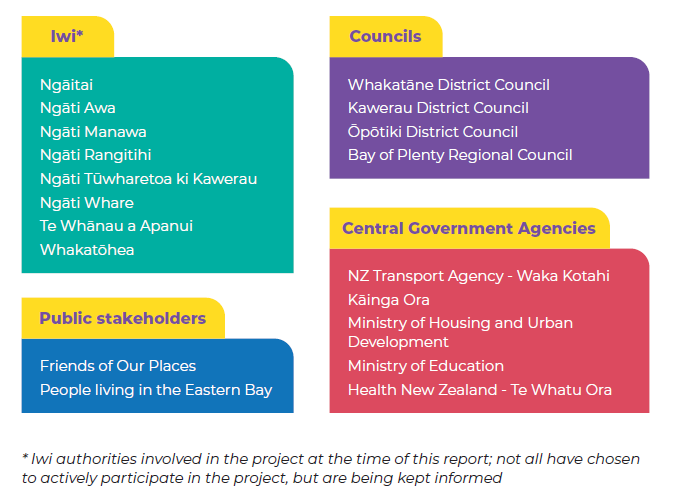Who’s involved?
Our Places – Eastern Bay Spatial Plan recognises that the Eastern Bay community needs to plan and implement together as a sub-region, rather than separate authorities and districts.
Decisions made to date have been informed by the following groups:
- Local and regional councils, and iwi authorities guide the approach and will agree on the final plan.
- Political leaders and executive staff provide strategic and technical leadership for the project.
- Friends of Our Places (a collective of businesses and organisations with an Eastern Bay perspective who are invested in the long-term success of the sub-region), community groups and people in the Eastern Bay represent interests of the Eastern Bay.

Iwi and hapū aspiration are fundamental
More than 50% of the Eastern Bay’s population area is Māori and there are 11 iwi, 99 hapū and 92 marae in the area.
The Eastern Bay is rich in culturally significant places, resources and taonga that Māori communities affiliate with. Māori-led housing and economic activities are fundamental to the Eastern Bay. Of the land in the Eastern Bay, 22% is Māori freehold land.
Iwi in the Eastern Bay are active local investors, which opens the potential to enter a time of rapid economic growth through development opportunities across a range of sectors, including aquaculture, horticulture, tourism, timber and wood processing, water bottling, dairy processing and renewable energy.
With increasing economic activity, housing and business land to keep up with demand is essential to achieving economic aspirations. Papakāinga, multi-generational housing and marae communities can be part of innovative solutions to meet community and housing needs. Transport connections to bring products and services to market is essential.

